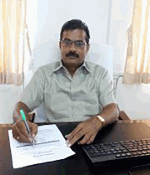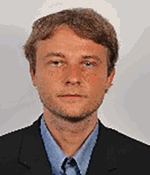Recently, IoT has become a torrid research area in the emerging Information and Communication Technologies [ICT] paradigm due to its extensive practical applications. Internet of Things [IoT] facilitates a smart interconnection between the evolving modern network models across every aspect of human lives to the internet. The emerging IoT frameworks provokes smart interconnection and communication in various smart societal and cloud applications. IoT is flourishing due to their efficient reliability, interoperability and real-time interconnecting capabilities for smart networking applications. In a nutshell, the applications of IoT are diverse which can range from smart city transportation, mobility to big data analysis. The integration of all these applications under a single framework called Internet of Things [IoT] is essentially required to make everything smart.
The main objective of this special issue is to discuss, share and exchange the ideas on all the facets of Internet of Things [IoT] and its application in societal, cloud and data analytics domain which leverages rapid changes to Information Technology [IT] infrastructure. This special issue comprising of 11 papers is focussed on various aspects of Internet of things [IoT] and their applications in various smart environments. These papers were selected based on the fundamental concepts deployed to enhance the Internet of Things [IoT] architecture. The first paper proposes the Hierarchical Manipulated Genetic Algorithm with Ant Colony Optimization, an innovative framework for developing an efficient big data pre-processing and search optimization process which can possibly recover and enhance the data with more accuracy and precision. The second paper covers the performance analysis of Device-to-Device communication based on SLTC handover mechanism in a Software Defined Network architecture. Continually third paper also illustrates about the performance analysis of intelligent networks using the efficient Hybrid Filter Detection with Inverse covariance matrix (HFDI) method.
To optimize the big data resources in emerging network applications especially in the cloud computing paradigm, the fourth paper proposes an efficient classified scheduling algorithm for achieving an efficient scheduling efficiency and resource utilization. As another innovative application of intelligent networks in civil engineering practices, the fifth paper proposes a predictive big data analytics method for scheduling and estimation of stadium construction process. Following this the sixth paper proposes a logistics vehicle tracking method, an innovative application of intelligent computer vision. Recently cloud computing has been emerged as a diverse technology to address the challenges associated with the intelligent networks, so the seventh paper focuses on the reliability analysis of emerging computer networks by utilizing the intelligent cloud computing method. As a continuation, Hadoop Cloud Computing [HCC] platform emerges a limelight technology, the eighth paper utilizes HCC technique to enable data mining process in the Electric Power Systems.
As the areas of application increase, so do the number of challenges that intelligent networks face, with fault tolerance and reliability being current issues. To address this limitation the ninth paper proposes genetic algorithm based optimal directed random testing process to reduce the interactive fault proneness that occurs in software applications. The tenth paper focuses on the introduction of novel method involving the basic regulation of intelligent cloud computing and the structure of computer network systems. This helps to analyse the feasibility of the proposed work in theoretical basis of application. Hence, the last paper proposes an advanced multi-factor user authentication scheme for E-governance applications in smart city infrastructure.
Acknowledgement
The Guest Editors wish to thank all the authors of this special issue for contributing their dedicated, novel and high-quality research papers for publication. We would also like to thank all the reviewers who have critically evaluated and shortlisted the research papers with the short stipulated time. Finally, we hope that the special issue will be informative and useful for all the readers.
Additional information
Notes on contributors

G. Ranganathan
Dr. G. Ranganathan, Principal, Ranganathan EngineeringCollege, Coimbatore, India.He has done his PhD in the Faculty of Information and Communication Engineering from Anna University, Chennai in the year 2013. His research thesis was in the area of Bio Medical Signal Processing. He has total of 29+ years of experience both in industry, teaching and research. He has guided several project works for many UG and PG Students in the areas of Bio Medical Signal Processing. He has published more than 35 research papers in International and National Journals and Conferences. He has also co-authored many books in electrical and electronics subjects. He has served as Referee for many reputed International Journals published by Elsevier, Springer, Taylor and Francis, etc. He has membership in various professional bodies like ISTE, IAENG etc., and has actively involved himself in organizing various international and national level conferences, symposiums, seminars etc.

Hui-Ming Wee
Dr.Hui-Ming Wee, DistinguishedProfessor,Department of Industrial and Systems Engineering and Associate Dean and Chaplain, College of Electrical and Computer Science, Chung Yuan Christian University. ACUCA (Asian Christian Universities CollegesAssociation) lectureship, 2005Visiting Scholar and invited lectureship: (University ofWashington, 2006), (San Jose State University, 2008), (Curtin University of Science and Technology, 2008), (University of Technology Sydney, 2009) (Colorado State University, 2011) (Tokyo Denki University, 2014/11), (Tarumanagara University andAtma JayaCatholicUniversity in Jakarta andAtma JayaUniversity in Yogyakarta, 2014/12) The Elite Study In Taiwan Project,Ministry of Education. Over 400 publications in career (Journals 241, Conferences 225),16 books and book chapters, publications being cited over 3000 times.

Pavel Lafata
Dr. Pavel Lafata received his M.Sc. degree in 2007 and the Ph.D. degree in 2011 from the Department of Telecommunication Engineering, Faculty of Electrical Engineering, Czech Technical University in Prague (CTU in Prague). He is now an assistant professor at the Department of Telecommunication Engineering of the CTU in Prague. Since 2007 he has been actively cooperating with several leading European manufacturers of telecommunication cables and optical network components performing field and laboratory testing of their products as well as consulting further research in this area. Some of his ideas about advanced methods for modeling of far-end crosstalk in multi-quad and multi-pair metallic cables were published in leading journals and conferences including IEEE Communication Letters journal etc. He also cooperates with many impact journals as a fellow reviewer, such as International Journal of Electrical Power & Energy Systems, Elektronika ir Elektrotechnika, IEEE Communications Letters, Recent Patents on Electrical & Electronic Engineering, International Journal of Emerging Technologies in Computational and Applied Sciences,ChinaCommunications, etc.He is an author or co-author of more than 100 scientific papers published in various impact journals, international conferences and meetings, open access journals, etc. He is also a member of advisory boards of several international conferences and journals as well.
